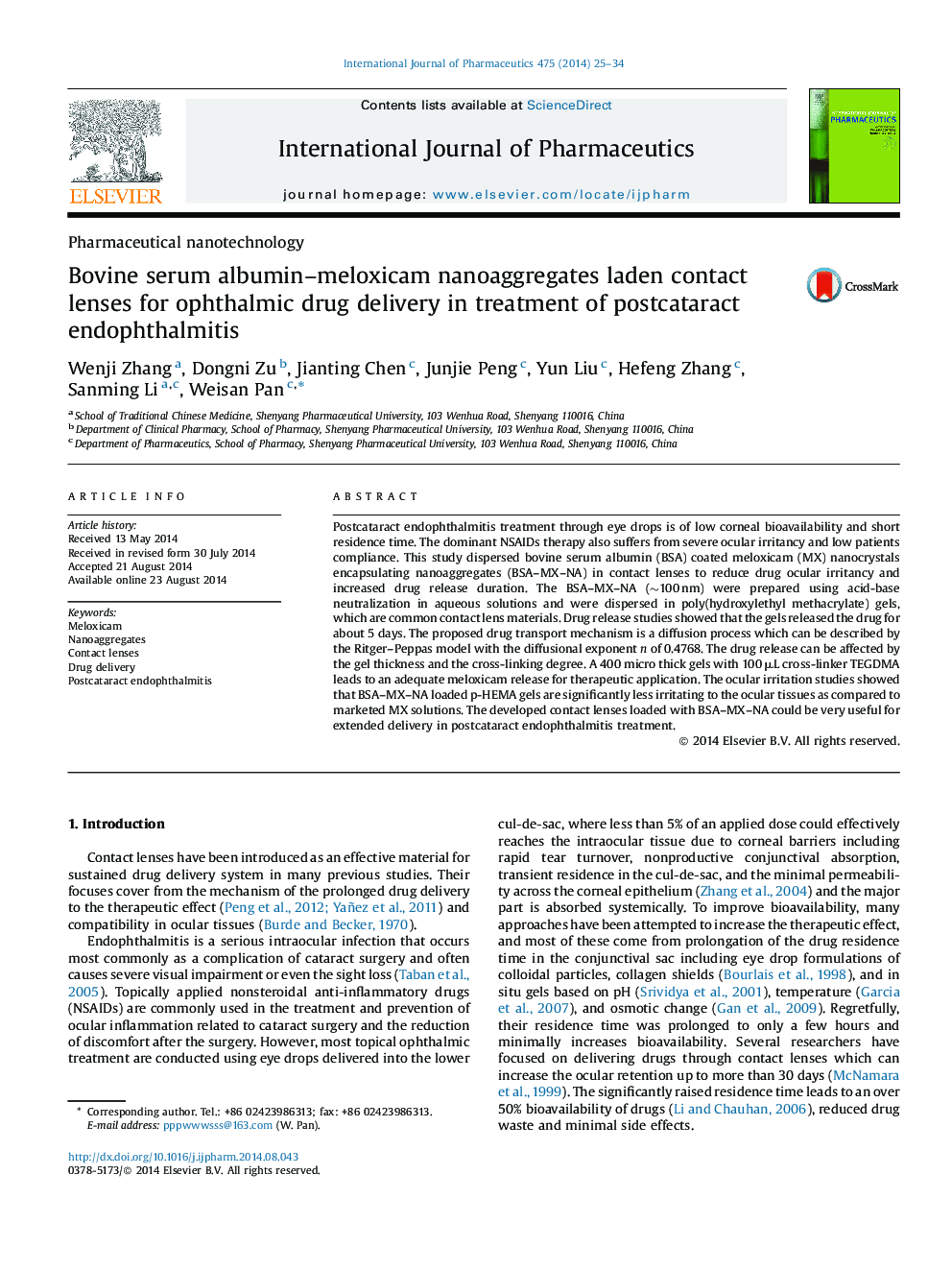| Article ID | Journal | Published Year | Pages | File Type |
|---|---|---|---|---|
| 2501674 | International Journal of Pharmaceutics | 2014 | 10 Pages |
Postcataract endophthalmitis treatment through eye drops is of low corneal bioavailability and short residence time. The dominant NSAIDs therapy also suffers from severe ocular irritancy and low patients compliance. This study dispersed bovine serum albumin (BSA) coated meloxicam (MX) nanocrystals encapsulating nanoaggregates (BSA–MX–NA) in contact lenses to reduce drug ocular irritancy and increased drug release duration. The BSA–MX–NA (∼100 nm) were prepared using acid-base neutralization in aqueous solutions and were dispersed in poly(hydroxylethyl methacrylate) gels, which are common contact lens materials. Drug release studies showed that the gels released the drug for about 5 days. The proposed drug transport mechanism is a diffusion process which can be described by the Ritger–Peppas model with the diffusional exponent n of 0.4768. The drug release can be affected by the gel thickness and the cross-linking degree. A 400 micro thick gels with 100 μL cross-linker TEGDMA leads to an adequate meloxicam release for therapeutic application. The ocular irritation studies showed that BSA–MX–NA loaded p-HEMA gels are significantly less irritating to the ocular tissues as compared to marketed MX solutions. The developed contact lenses loaded with BSA–MX–NA could be very useful for extended delivery in postcataract endophthalmitis treatment.
Graphical abstractFigure optionsDownload full-size imageDownload high-quality image (173 K)Download as PowerPoint slide
